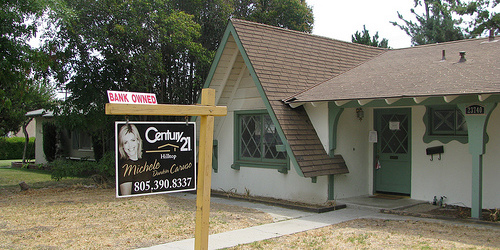What the Heck Are Good Bones?
If you’ve been searching for a home recently, you may have heard a real estate agent tell you that the “house has good bones.” Or maybe the phrase was right there in the listing.
It’s a buzzword, or rather buzz phrase, in the real estate world, but it’s often just thrown out without any sort of explanation as some kind of added benefit. Sometimes it’s not even true!
Typically, the expression is used when a house appears to be in bad shape cosmetically as some kind of silver lining. Generally, the property in question needs some work, or perhaps a lot of work, to bring out its full potential. But importantly, it does have potential.
In other words, the real estate agent or other interested party, or perhaps just a friend or family member, is telling you that with some elbow grease, and maybe a sledgehammer, you can make the house a real beauty.
It’s Opinion, Not Fact
The thing with “good bones” is that it’s a subjective view. No one can tell you with certainty that a home has good bones because it’s a loose description and could also be based on personal opinion/preference.
It may also not be true, as mentioned above. The phrase seems to get thrown around without much care.
But there are certain things to look for in a home if you want to snag a property with what many refer to as good bones.
Perhaps most important is the structural integrity of the home, along with the foundation. If the structure and foundation are in good shape, many large renovation costs can probably be avoided.
Same goes with the roof. Is it in good shape? No major leaks, no design issues that will make it a pain in the rear down the road? Does it have a reasonable amount of life left before replacement is needed?
Another biggie is the plumbing. Underneath the exterior you could argue are the real bones, all those pipes and other things lurking below the surface. They also tend to be the most expensive items to fix, so if they’re in good shape the home can be said to have good bones.
You may also want more modern systems that don’t require a lot of retrofitting – old electrical and plumbing systems can be a real bear to work with.
There’s also the view from the street…does the house in question look sturdy? Are there visible cracks, sloping, rotting wood, mold, stains on the stucco, etc. If everything looks clean, level, and smooth, the bones might be defined as good.
[Best and Worst Home Improvements]
Is It Superficial or Deeper than That?
Once you enter the home, how’s the layout? Are there weird hallways and nooks that don’t serve much purpose? Are the bedrooms uniform in size? Is there a proper master bedroom and reasonably sized guest and kids’ bedrooms?
What about the bathrooms? Are there a proportional number of bathrooms to bedrooms?
A four-bedroom home with a single bathroom is a functional obsolescence problem because it means you’ll likely be required to build out another bathroom to make the home normal.
Now let’s check out the kitchen. Is the layout good? Is it nice and open with all the necessary fixtures all in place, or is there no room for storage? Is the dishwasher while ajar hitting the other side of the kitchen? Again, you want a spacious area here that won’t need to be completely reconfigured.
Do all the appliances fit in the kitchen, or do you need a special Euro fridge to fit the space? Is there room for a full kitchen sink and four-burner range, microwave, etc. Plenty of counter space and cabinetry for all your dishes?
If construction is necessary to get it right, the bones might not be quite right. Sure, you might be able to knock down non-load bearing walls here and there, but it could still be a major undertaking for some homeowners.
Instead, find an ugly home that just needs to be redecorated and cleaned up. That’s probably the best way to sum it up.
If the home is just poorly decorated and furnished, but has a great layout and is in good shape overall, it might have great bones. In other words, if you need to tear out the shag carpet, remove old wallpaper, repaint the walls, and scrape the popcorn ceilings to make it look awesome, good bones it is.
But if the home can only achieve its potential via heavy construction, good bones probably aren’t in the cards unless your Bob Vila.
So in conclusion, if you’re looking for good bones, you want a home that has design potential without the need for major construction that is void of any major defects. Oh, and for good measure, some character is always nice, such as exposed beams or bricks to separate it from the crowd.
Signs a Home Has Good Bones
- No major construction necessary to achieve design goals
- It can be really ugly now, but needs to have potential that is easily achieved
- Free of defects like cracks, sloping, wood rot, stains, leaks, etc.
- Good pipes, plumbing fixtures, electrical
- A roof that is in good shape with some life left
- Good interior layout, desired number of rooms for occupant
- Good-sized rooms, including large (proper) master with ensuite bath
- Good proportion of bedrooms to bathrooms
- Good use of space, no random hallways or small nooks
- Ample storage space, garage
- Open floor plan that receives lots of natural light
- No major unpermitted work
- Unique features such as exposed brick or ceiling beams
- No bad unique features that can hurt value or make hard to appraise
